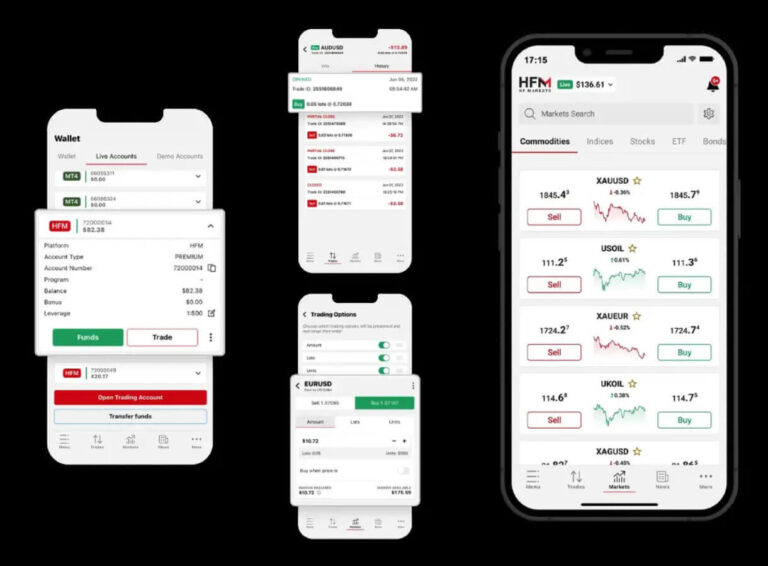How to become an affiliate marketer
Looking to become an affiliate marketer to help boost your online income? Here is everything you need to know.

Affiliate marketing is one of the most popular ways to make money on the Internet, and there are good reasons for that.
Being an affiliate marketer simply means helping someone else to sell a product or service, and getting paid for your help. That’s all.
A good affiliate marketer knows where to find the potential customers for any merchant and how to direct those customers to the merchant’s offers.
If you’ve heard enough about affiliate marketing and finally want to take the first step into the business, then this guide will be of good help to you.
What Is Affiliate Marketing
Internet affiliate marketing is a method of selling goods and services by allowing different websites to refer customers to participating merchants, who then compensate the affiliates with a commission.
Affiliate marketing is a performance-based revenue-sharing business, and this means that the merchant or advertiser pays the affiliate or publisher depending on how many customers his efforts bring.
The merchant owns the product and can be a person or a company. Likewise, the affiliate can be a person or a company, but his compensation is limited to only customers that convert.
A conversion here means when the referred customer takes a pre-determined action on the merchant’s website. This can range from buying a product to downloading software, entering an email address, and so on.
Advantages & Disadvantages of Affiliate Marketing
Affiliate marketing offers many advantages, as well as some disadvantages. But like every business venture, they may or may not, fall in your favor.
Here are the top advantages of affiliate marketing
- No Need to Develop Products – Affiliate networks offer you direct access to thousands of advertisers with thousands of products in different categories. So, no need to spend time and money developing yours. Just start campaigning and make money.
- Flexibility – You are not restricted to any product or even niche. You are always free to sell what converts best with your audience.
- Low Cost & Low Risk – Most of the business risk in affiliate marketing is carried by the advertiser.
- Easy to Scale – Once you find a customer demographic that pays you well, scaling the business becomes easier.
- Passive Income – Most affiliate marketing methods generate income on their own, up to weeks, months, and even years down the line.
The affiliate marketing method also has some disadvantages for affiliates and here are the major ones:
- High Competition – Most of the top-performing affiliate products have stiff competition from other publishers. So, it can be tough for a newbie to break through.
- No Control of Programs – The advertiser controls everything about his products, and can even pull the plug at any time.
- No Guarantee of Sales – Affiliate marketing is still a venture. So, after all your efforts to promote an offer, you might still not get a commission.
How Much Can you Make From Affiliate Marketing?
In simple terms, you can make anywhere from $0 to millions of dollars per year. Affiliate marketing is an open market and this means that you get what you put in.
Your earnings will depend on how good you are at marketing, how long you have been doing it, and on the products that you are promoting.
If you are just starting, then you cannot compare yourself to a marketer with a 40K subscribers mailing list or another with a niche website that gets over 50K visitors per month.
The good news, however, is that if you are willing to put in the work, then you have the potential to turn it into a 5- or 6-figure business down the road.
Compensation Methods
Affiliate programs use different methods to track and pay their publishers, and this usually depends on the type of services or products being offered.
Here are the most popular types of affiliate compensation methods:
- Pay Per Sale (PPS) – Most affiliate programs use this method. Pay Per Sale simply means that the merchant will pay the affiliate a fixed sum or percentage of a product’s price when a customer buys an item using the affiliate’s link. An example is the Amazon Associates affiliate program.
- Pay Per Action (PPA) – As the name suggests, the affiliate gets paid once the customer fulfills a specified action on the merchant’s website. Such actions can include subscribing to a mailing list, registering a subscription, or accepting to take part in some other programs.
- Pay Per Install (PPI) – This method is mostly used by software publishers. The customer has to download and install the software for the transaction to count.
How Internet Affiliate Marketing Works
Referral and revenue sharing programs existed long before. But thanks to the Internet, cookies, and HTTP referrers, online affiliate networks can track visitor engagements from publisher to advertiser websites with more precision than ever before.
While the affiliate network connects advertisers with publishers, each publisher is presented with the best tools to make his work easier. For instance, an automatically generated affiliate link will contain all the information needed for the affiliate network to properly track visitor conversions. All the publisher has to do is to add it as a link to his website.
Though systems may vary, the tracking usually works like this (at the bare minimum):
- The visitor clicks a link on the affiliate’s (publisher’s) website. This sends data to the affiliate network and returns a new address to which the browser is automatically redirected.
- The visitor now finds himself on the merchant’s (advertiser’s) website. His browser includes a code from the affiliate network that tells the merchant who the referring affiliate is.
- If the visitor completes the expected task, the merchant’s thank you page or something similar will contain a call-back function that tells the affiliate network that a specific affiliate’s visitor converted.
- The affiliate network will now credit the publisher (affiliate) with the agreed commission.
How To Become An Affiliate Marketer
Here is a step-by-step guide that you can follow to become a solid affiliate marketer:
1. Choose a Niche
Your first step is to decide what to focus on. There are thousands of market niches out there, but it’s best to focus on something that you love or have an interest in.
2. Research Your Product(s)
You want to know how popular your niche’s products are and how many other marketers are promoting them. You can use tools such as Google Trends and the Keyword Planner to gauge a product’s demand and find its related keywords. Other tools include Ranktracker, KeywordMagic, and Moz Keyword Research. Networks like Clickbank also integrate research tools.
3. Create A Website
After you’ve gotten an idea of what your chosen niche looks like, your next step is to build a web presence. A WordPress blog is the fastest route here.
4. Build Your Audience
You want to focus on developing your website first. So, create and publish great content to help promote your work. While you could buy PPC ads to drive traffic to your site, it’s best to start with content marketing.
Produce helpful content that provides value to your audience, answer questions, create lists of top products, offer solutions, review services, and so on. Monetization should come down the line when you have built sizable traffic.
You may also like: How to drive traffic to your blog
5. Register On A Network
Once your website is doing well and has good traffic statistics, then it’s time to register on an affiliate network. Keep in mind that an impressive website will guarantee acceptance into most networks. (See the list of top networks below)
6. Get the Affiliate link
Different platforms have their ways of doing this. You need your affiliate link that points to the product that you want to promote, while additionally including your identifier as an affiliate.
7. Make A Post With Your Affiliate Link
Once you have your link, you can now make a new post on your website to promote that product. Most marketers simply review the product, but you can also compare it with similar products or add other helpful stuff.
8. Promote Your Posts
After your post with the affiliate link goes live, you may now want to promote it. Some social bookmarks and shares, forum posts, and links to it from online discussions on the same topic is a good start.
9. Rinse & Repeat
Depending on your niche, you can add more affiliate products and posts to the website, or move on to another website. Rinse and repeat.
Types of Affiliate Websites
You can run an affiliate business online using different methods, from self-promotion on social media to large websites. Here are the most popular types of affiliate websites that you will find out there:
- Blogs – This is a popular method. Blog about related products and include your affiliate links in the reviews.
- Social Media – Influencers with many followers can promote products using their affiliate links.
- Price Comparison – Old school but still relevant. Good for those who need the cheapest prices.
- Email lists – Those with large email lists can promote helpful affiliate products to their subscribers.
- Video Sites – Affiliate marketers can also create videos about specific products and include their links.
- Personal Websites – Self-explanatory.
- Coupon & Rebate Sites – Self-explanatory.
List of Affiliate Networks
There are lots of affiliate networks that you can work with out there, some are great, others are not. Here, however, are the top names:
- CJ Affiliate – One of the oldest affiliate networks on the web.
- Clickbank – The top network for digital products.
- Amazon Associates – Strictly for Amazon.com products
- eBay Partner Network – For eBay
- FlexOffers – Top network with over 10K advertisers
- MaxBounty – Solid affiliate network
Glossary of Affiliate Marketing Terms
- Commission – The amount of money a merchant will pay to any affiliate for a referral. This could be a fixed sum or a percentage of the product’s price.
- Visitors – These are the people that come to your website.
- CTR – Click-Through-Rate is a measure of how many website visitors view a particular marketing message with how many of them click on the link.
- Conversion Rate – The percentage of visitors that complete a needed action on a website, such as entering email address or buying a product.
- CPM – Cost Per Thousand impressions. This refers to how much gets paid for displaying 1,000 impressions of a specified message or advert.
- Tracking – A technical means of following a customer from website to website to make sure transactions are settled accurately between advertisers and publishers.
- Affiliate Link – A URL (website address) of the merchant that includes both a specific product or service, plus an ID that identifies the affiliate referring the visitor.
- Consumer – Your website visitor.
- Publisher – Affiliate marketers are also referred to as publishers by some affiliate networks.
- Advertiser – The merchant or product owner that is trying to sell his products through an affiliate network.
- PPC – Pay Per Click, the amount paid each time a visitor clicks on an ad. It is used mainly by ad networks.
- CPA – Cost Per Action, the total dollar amount to get a visitor to take an action on a website.
- CPL – Cost Per Lead, the total dollar amount to get a qualified lead. Note that while a visitor might fill a form and it qualifies for CPA, the visitor will have to be more interested in the offering and a potential customer to be called a lead.
Conclusion
We have reached the end of this post on how to become an affiliate marketer, and as you can imagine, there is quite a bit of work to be done. However, the potential rewards are also huge.
This guide showed you a basic but solid method to build and grow an affiliate business online. But keep in mind that you are free to get creative with it, tweak the steps, add some extras, and build something unique and very profitable.




